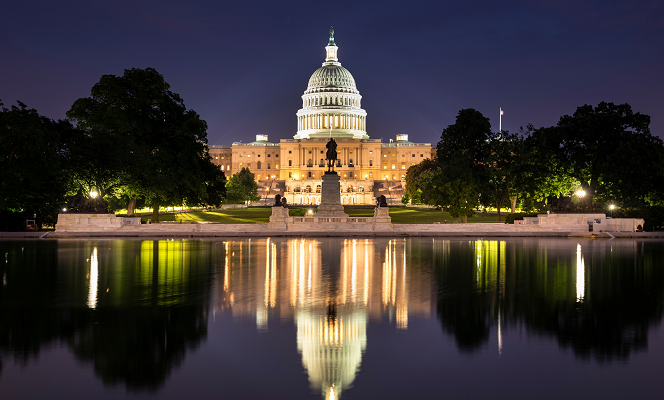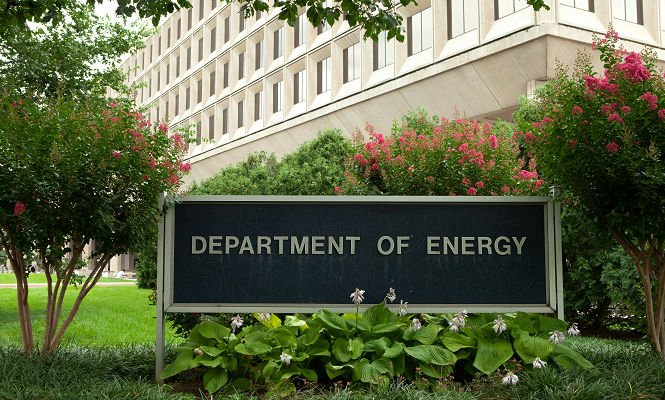How Energy-Efficient is the White House?
Let's Save Energy
Alliance to Save Energy's Blog
How Energy-Efficient is the White House?

132 rooms. 147 windows. 55,000 square feet. And 229 years of history. The White House is the most famous home in America – the site of history-altering decisions, stately events, and countless high-stakes negotiations. For weeks, we’ve been providing analysis of 1600 Pennsylvania Avenue’s newest resident’s policy decisions pertaining to energy efficiency. But let’s take a step out of the policy weeds for a moment and provide a different sort of analysis: How energy-efficient is the White House itself?
A Little History
The cornerstone for the White House was laid in 1792, with its first occupants – John and Abigail Adams – moving in eight years later. It would be almost a century until electricity was installed during the administration of Benjamin Harrison, 10 years after Thomas Edison patented the light bulb. The modern appliances we’re so used to today were introduced one by one: the first electric fridge in 1926, air conditioning in 1933, the first computer in 1978.
These installations followed a familiar pattern of leadership by the federal government in piloting newer technologies not only for convenience (no one wants to go through a muggy D.C. summer without A.C.), but as an example to the American people of their value. Maybe President Lyndon B. Johnson even somehow anticipated the oil crisis of the 1970s precipitating a national recognition of the need for energy efficiency, as already in 1964, he was nicknamed “Light Bulb Johnson” for his habit of turning off the lights (sometimes even in rooms that were still occupied!) so as not to waste taxpayer money on the White House energy bill.
Energy efficiency features
The first full-fledged effort to bring the benefits of energy efficiency to the White House occurred under the Clinton administration in its “Greening the White House” project. Bill Clinton said of the project, "We're going to identify what it takes to make the White House a model for efficiency and waste reduction, and then we're going to get the job done." Steps taken included replacing the roof of the White House to improve the building envelope, replacing incandescent bulbs, insulating all pipes, and purchasing only ENERGY STAR office equipment. The project had estimated savings of $300,000 annually and cut more than 845 metric tons of carbon emissions.
Since Clinton’s time, additional measures have been taken to continue improving efficiency: President George W. Bush installed low-flush toilets (perhaps to the ire of a later resident) and better insulation, President Obama installed LEDs in the White House portico, and President Trump replaced the 27-year-old HVAC unit. It remains to be seen if President Biden will take things further.
Room for improvement
The specific numbers on the White House’s annual energy usage aren’t available, but based on the size of the building, it’s estimated to be more than 850,000kWh. As a historic, centuries-old building that is everything from an office building to a museum to an active residence, it’s unlikely that the White House will ever be the perfect model for efficiency. But President Biden could continue the example-setting tradition by exploring remaining opportunities for optimizing its energy use. Particularly as President Biden has made significant campaign promises around energy efficiency, including retrofitting millions of homes, Biden could demonstrate his commitment by showing what’s possible at his own. He could even be a trailblazer by adapting Active Efficiency strategies – like smart controls and distributed energy resources (DERs) – to help inform and inspire the American people on what the next generation of efficiency looks like. Not to mention save them a bit of tax expense along the way.
RECENT BLOG POSTS
STAY EMPOWERED
Help the Alliance advocate for policies to use energy more efficiently – supporting job creation, reduced emissions, and lower costs. Contact your member of Congress.
Energy efficiency is smart, nonpartisan, and practical. So are we. Our strength comes from an unparalleled group of Alliance Associates working collaboratively under the Alliance umbrella to pave the way for energy efficiency gains.
The power of efficiency is in your hands. Supporting the Alliance means supporting a vision for using energy more productively to achieve economic growth, a cleaner environment, and greater energy security, affordability, and reliability.



